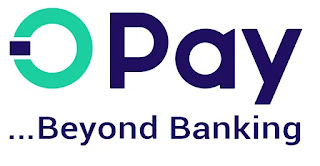Opay Fake Transfer & Payment Alert: How to be Safe
We use mobile payment apps like Opay to make payments, transfer money, and even shop online. However, with the convenience of these apps comes the risk of scams. One of the most common scams is the Opay fake transfer scam.
In this scam, scammers will send you a fake payment notification, making it seem like they have sent you money. The notification will often look real, with the correct amount and transaction details. However, when you try to withdraw the money, you will find that it is not actually in your account.
This scam can be very convincing, especially if you are not familiar with Opay. That's why it is important to be aware of the signs of a fake transfer and to take steps to protect yourself.
This blog post will teach you everything you need to know about Opay Fake Transfer & Payment Alert: How to be Safe.
What is Opay Fake Transfer & Payment Alert
Opay fake transfer and payment alerts are designed to mimic genuine Opay notifications, tricking users into believing they have received or sent money. These alerts often appear as pop-ups or SMS messages, carefully crafted to resemble authentic Opay communications. Scammers use various techniques to make these alerts appear convincing, including replicating Opay's branding, using official fonts and colors, and incorporating transaction details like timestamps and amounts.
The primary objective of these fake alerts is to manipulate users into taking actions that could compromise their financial security or loose money.
How to Identify Opay Fake Transfer & Payment Alert
To effectively protect yourself from Opay fake transfer and payment alerts, it is essential to recognize the telltale signs that indicate fraudulent activity. Here are some key red flags to watch out for:
- Suspicious Urgency: Scammers often create a sense of urgency, pressuring users to act immediately without carefully examining the details.
- Grammatical Errors or Inconsistent Language: Genuine Opay communications maintain a high level of professionalism and consistency in language. If the alert contains grammatical errors or uses inconsistent language, it's likely a fake.
- Unusual Sender or Recipient Information: If the sender or recipient information in the alert is unfamiliar or suspicious, it's a sign to be cautious.
- Inconsistencies: A legitimate Opay alert will always include the account number of the sender and the transaction details, such as the amount transferred, the date, and the time. However, fake alerts often omit these crucial pieces of information, leaving the recipient with an incomplete picture of the supposed transaction.
Opay Fake Transfer & Payment Alert: How to be Safe
Fraudsters require few things to send fake transfer; your phone number and your account number. With these details, they craft deceptive messages that imitate genuine bank alerts and then send them to the innocent person. These fraudsters may also use specific apps, such as Flash Fund App, to send these fake alerts.
To stay stafe:
Whenever you make a transaction, always use the email linked to your Opay account to verify any financial activities. If you don't have an email linked to your account, consider setting one up. This ensures you have access to your bank statements and account balance, allowing you to confirm the authenticity of any transactions.
Regularly check your account balance using your Opay bank's USSD code (*955#), mobile banking app, Internet banking, or an ATM machine. This way, you can identify any discrepancies between your actual balance and the balance reflected in the alert. A fake alert will not reflect in your account balance or statement, serving as a clear indicator that something is wrong.
Genuine credit alerts should accurately reflect your available bank balance. If a credit alert does not show your account balance or doesn't match the payment made by your customers or buyers, it's likely a fake alert. Exercise caution and refrain from taking any action based on such alerts.
Never share your bank account details or personal information with strangers, whether through email, phone calls, or online platforms. Avoid clicking on links that request sensitive information, as scammers often use this tactic to harvest data for their fraudulent activities.
Also Remember:
- Be vigilant and cautious when dealing with online transactions.
- Never respond to unsolicited requests for sensitive information.
- Verify any suspicious activity directly through your Opay account.
- Report any suspected fraud to Opay's customer support team immediately.
FAQS
How do I reverse a transfer on OPay?
OPay does not currently offer a feature to reverse transfers. If you have made an incorrect transfer, you will need to contact OPay customer support for assistance.
Is it safe to open an OPay account?
Yes, it is safe to open an OPay account. OPay is a licensed financial institution that is regulated by the Central Bank of Nigeria. They use industry-standard security measures to protect your personal and financial information.
What is the USSD code for OPay transfer?
*955# is the USSD code for OPay transfer.
Can I transfer money from OPay to Palmpay?
Yes, you can transfer money from OPay to Palmpay. To do this, you will need to know the recipient's Palmpay phone number. You can then enter this number into the OPay app and follow the prompts to complete the transfer.
How can you tell a fake transfer alert?
Identifying a fake transfer alert is easy Such alerts commonly lack essential transaction details like reference numbers or transaction IDs. Watch out for unusual or misspelled words in the messages. Be cautious if the alert requests actions such as sending money back or sharing personal information outside the official app. To confirm a transfer's legitimacy, always cross-check your transaction history within the OPay app. Stay vigilant and ensure your transactions are secure.
Conclusion
Opay fake transfer and payment alerts have emerged as a common tactic employed by scammers to trick unsuspecting users. Be careful and take precautions.














Leave a Comment